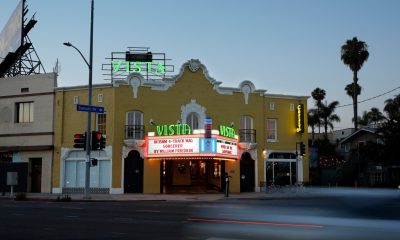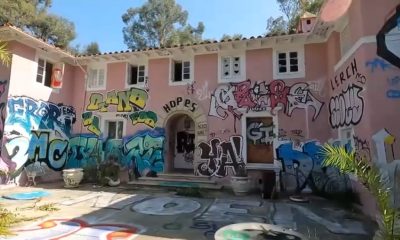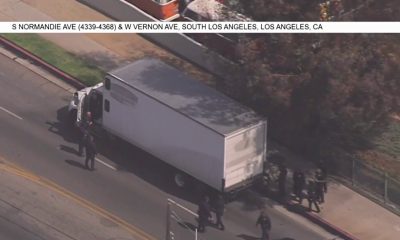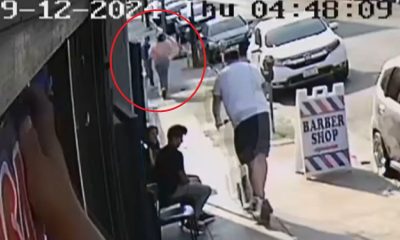Local News
Independent cinemas in Los Angeles are finding their audience – NBC Los Angeles
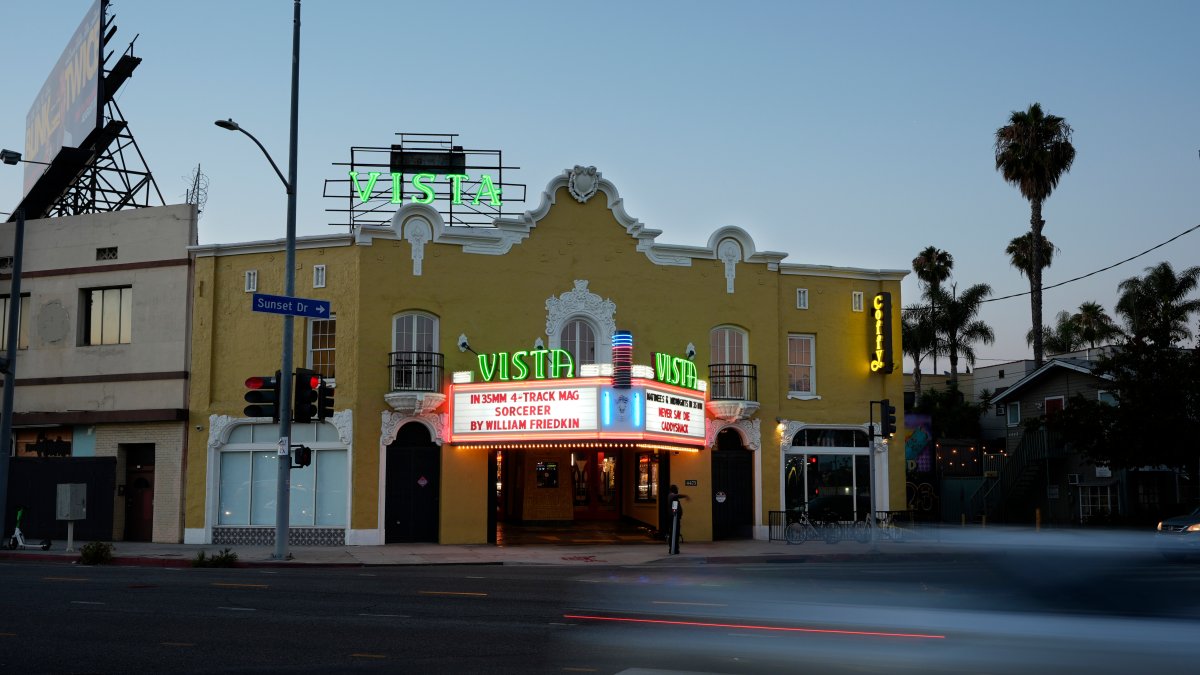
On a hot summer evening, Miles Villalon lined up outside the New Beverly Cinema, hours before showtime.
The 36-year-old already had tickets to the Watergate-themed double feature of 1976’s “All the President’s Men” and 1999’s “Dick.” But Villalon braved Los Angeles’ infamous rush-hour traffic to snag front-row seats at Quentin Tarantino’s historic theater.
This level of dedication is routine for the Starbucks barista and aspiring filmmaker, who typically sees up to six movies a week in theaters, and almost exclusively in independently owned theaters in and around Los Angeles.
“I always say it feels like church,” he said. “When I go to AMC, I just sit there. And I can’t really experience that communal thing that we have here, where we’re all just worshipping at the altar of celluloid.”
Streaming — and a pandemic — have radically transformed cinema consumption, but Villalon is part of a growing number of mostly younger people contributing to a renaissance of LA’s independent theater scene. The city’s enduring, if diminished, role as a mecca of the film industry still shapes its residents and their entertainment preferences, often with renewed appreciation after the pandemic.
A revival in the City of Angels
Part of what makes the city unique is its abundance of historic theaters, salvaged amid looming closures or resurrected in recent years by those with ties to the film industry. Experts see a pattern of success for a certain kind of theater experience in Los Angeles.
Kate Markham, the managing director at Art House Convergence, a coalition of independent cinema exhibitors, said a key factor is the people who run these theaters.
“They know their audiences or their potential audiences, and they are curating programs and an environment for them to have an exceptional experience,” she wrote in an email.
Tarantino pioneered the trend when he purchased the New Beverly in 2007. After Netflix bought and restored the nearby Egyptian Theater, which first opened in 1922 as a silent movie house, the company reopened it to the public in November in partnership with the nonprofit American Cinematheque. It’s now a bustling hub, regularly welcoming A-list celebrities premiering their projects as well as film buffs willing to stick around for hourslong marathons, like a recent screening of four Paul Thomas Anderson movies.
Further east is Vidiots. Previously existing as a Santa Monica video store before it closed in 2017, Vidiots reopened across town five years later with the addition of a 271-seat theater, bar and new crop of devotees.
“It’s literally my favorite place to be outside of my own snuggly home,” said filmmaker and actor Mark Duplass, a financial backer of Vidiots alongside dozens of other high-profile names, including Aubrey Plaza and Lily Collins.
What’s bringing people in?
What draws people to independent theaters can vary, from older programming to elevated food-and-drink offerings to lower prices. But many agree, above all, there is a communal aspect chains can’t match.
“The bigger places obviously have premium formats and stuff like that. But I think there’s a lot less communal connection” said Dr. Michael Hook, who attended a matinee of “Seven Samurai” at Vidiots with a Children’s Hospital Los Angeles co-worker. “You’re not just milling around with people who also have selected to go to a three-hour-long 1950s Japanese movie.”
Although the pandemic was a blow from which the box office has yet to recover, it also served as a pruning that made the movie theater landscape more sustainable for the streaming era, according to Janice O’Bryan, Comscore’s senior vice president.
“COVID weeded out some of the stuff that needed to close anyway,” O’Bryan said of the more than 500 theaters that closed nationwide. “I think that it made everything healthier.”
The theaters that survived have found niches, sometimes purposefully eschewing the chains’ 4DX, reclining seats and dining services.
“For the types of films that we show, I definitely don’t want waiters walking around, bringing stuff to people and hearing the scraping of cutlery on plates,” laughed Greg Laemmle, who co-runs the Laemmle Theaters, a fixture of independent cinema in Los Angeles for nearly a century.
But Laemmle acknowledges the importance of giving audiences options beyond popcorn and soda, especially as an additional revenue source. Embracing food and drinks can sometimes turn the theater into a unique destination.
“When I normally go to a movie theater, I show up two minutes before the movie starts,” Duplass said. “I go to Vidiots like 45 minutes before the movie starts so I can get my chilled Junior Mints, I can have a drink at the bar, see some people. I go and walk around the video store.”
In February, more than 30 filmmakers — including Jason Reitman, Steven Spielberg, Denis Villeneuve and Christopher Nolan — acquired Westwood’s Village Theater in an effort to preserve it. Also coming to the red-carpet premiere favorite? A restaurant, bar and gallery.
Not without challenges
Like the rest of the country, LA movie theaters have had their share of pandemic-inflicted challenges — some exacerbated by last summer’s strikes — including fewer movies to show.
And not all theaters have found their Tarantino or Reitman. The iconic Cinerama Dome’s closure was a blow to the city’s cinephiles. Though owned and operated by the ArcLight Cinemas chain when it closed in April 2021, the Dome was a kind of singularity in Hollywood, a regular premiere spot memorialized in film and a symbol of the city’s place in the industry.
Its fate remains in limbo, with reported delays to the targeting reopening date, despite parent company Decurion Corporation, who couldn’t be reached for comment, being granted a liquor license for the multiplex in July 2022.
The venues that have been preserved often have done so through some form of benefaction or aid, like the $16 billion federal Shuttered Venue Operators Grant program, which Laemmle used during the pandemic. He said the funds were a needed bandage in June 2021. But a full recovery has been slow.
“It provided some some stability. How much remains to be seen,” he said. “The waters are still muddy.”
Only in Hollywood?
In some ways, thanks to the city’s history, culture and surfeit of theaters, this renaissance is most apparent in Los Angeles, admits Bryan Braunlich, the executive director of the National Association of Theatre Owners Cinema Foundation.
Tarantino, who declined to be interviewed, is less likely to purchase a dying revival house in Peoria, Illinois. But, Braunlich argued, that doesn’t mean this trend can’t have an impact there.
“Hollywood and filmmakers are saying, ‘Hey, movie theaters matter,’” he said. “There are amazing independent theater owners that are thriving across the country. And I think they get a boost of confidence of like, ‘Yes, this is a great business to be in. This is a great business to invest in. And we’re not alone as film nerds doing this.’”
As Duplass reflected on his own introduction to cinema growing up in the suburbs of New Orleans, he recalled a trip to Vidiots to see “Raising Arizona” with his parents.
“I realized that I was the same age now that they were then when we first saw it in the movie theater together. And I got to hold my dad’s hand as we cried in that last scene,” he said. “We shared that movie, but we shared the passing of time in our favorite church, which is the movie theater.”
Local News
What the East and Gulf coast port strikes mean for the Port of LA – NBC Los Angeles
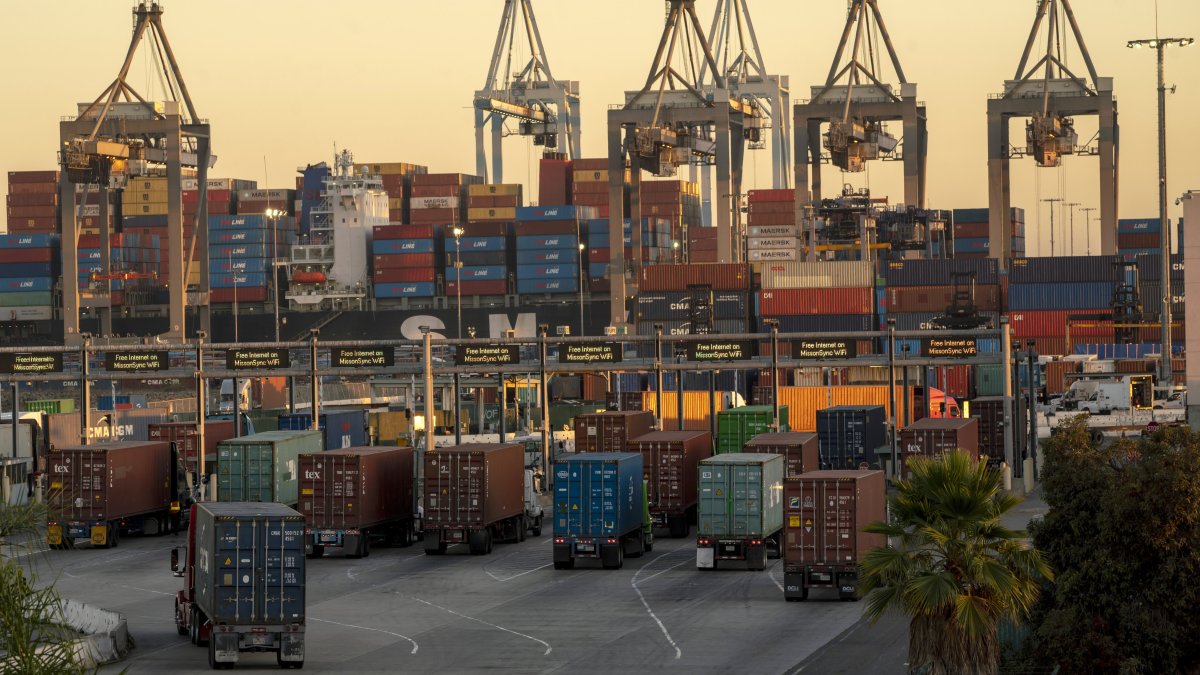
Dock workers, nearly 45,000 of them from as far north as Maine to as far south as Texas, have dropped their hardhats for a hard stance as they begin walking the picket line.
But the strikes haven’t had any direct impact on the West Coast, including the Port of LA — at least, not yet.
Ports in California, Oregon, Washington, Hawaii, and British Columbia are unionized under the “International Longshore and Warehouse Union” instead, or ILWU. The ILWU isn’t expected to hold a similar stoppage. It ratified its most recent six-year contract last year, which garnered 75% overall approval from workers.
The potential long term effects on the West Coast are still ambiguous. In an interview with CNBC Tuesday morning, Port of Los Angeles Executive Director Gene Seroka said several importers have “fractionally shifted” some of their allocations to the twin ports of LA, busiest container port in North America, and Long Beach.
Seroka said the ports are prepared if the strike forces a diversion of shipments from the East and Gulf coast ports to Southern California.
“The underlying US economy remains strong,” Seroka said on CNBC. “These purchase orders that go in from retailers and manufacturers typically start off the process 90 to 100 days before cargo makes its way here to the West Coast. Those numbers continue to be strong.
“On the ground, for about a year and a half now, folks have been a little bit worried about protracted labor negotiations, and have told me they fractionally shipped some of their allocations over the past months here to Los Angeles and Long Beach.”
Seroka also said Southern California ports are currently operating at 80-percent effective capacity and that they “still have room to grow.” There are no backlogs, he said.
CNBC reported the areas most affected by the strike stand to include auto parts, apparel, home furnishings, and sporting goods.
NBCLA has reached out to the Ports of Los Angeles and Long Beach for more details.
According to NBC News, the work stoppage is expected to cost the U.S. economy between several hundred million, and $4.5 billion per day.
About $34 billion in cargo is currently en route to East Coast ports. Just a one-day strike could create nearly a week of congestion. If the strike reaches two weeks, congestion could extend as far as 2025, deeply affecting the upcoming holiday season.
Local News
Space Shuttle prototype to go on display in Downey – NBC Los Angeles
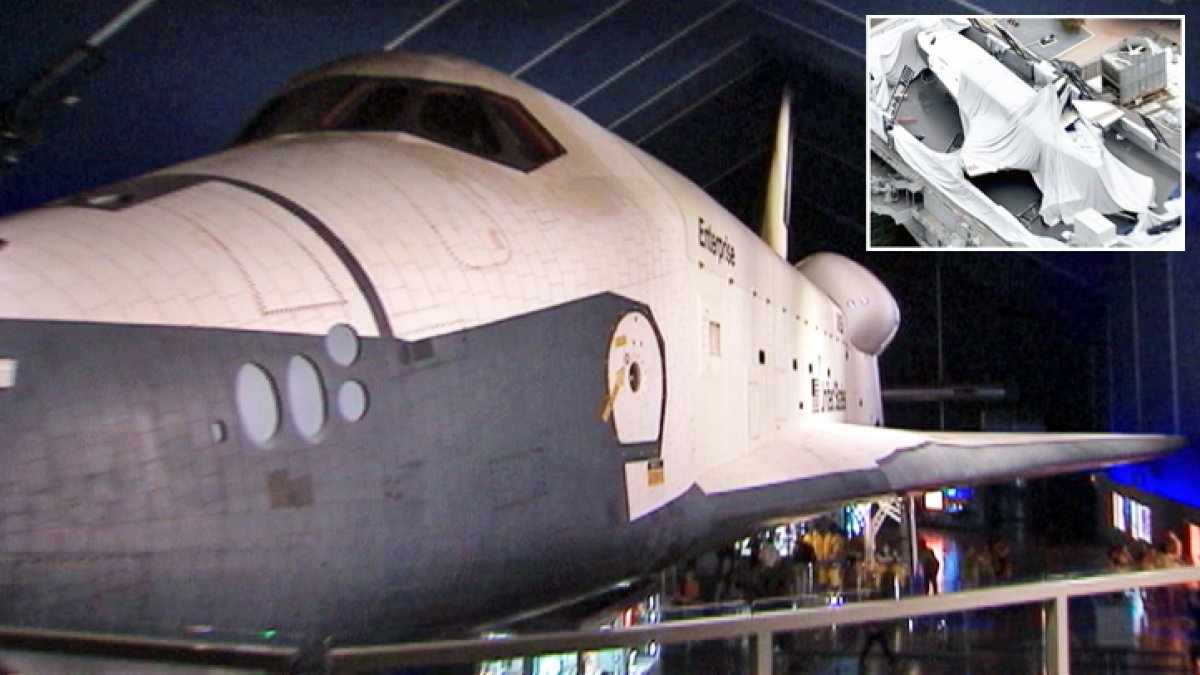
It’s a bird. It’s a plane. It’s a full size model space shuttle?
While it never quite made it to space, the full-size original space shuttle prototype built in 1972 as part of Rockwell International’s eventually successful bid to build NASA’s shuttles will move through the streets of Downey this month. It’s headed to the Columbia Memorial Space Center three blocks down the road, where it’ll call its newly expanded exhibit hall home for the foreseeable future.
The model, later named the “Inspiration” in 2012, measures 122 feet-long by 35 feet-tall (37 by 11 meter). After receiving the contract to build the real space shuttles, Rockwell used the mostly wood and plastic model rocket as a fitting tool before adding and adjusting the real deal.
After the end of the shuttle program, however, the “Inspiration” was tucked away for storage where it sat for the past decade in pieces. Earlier this year, the city of Downey approved plans for a roughly 20,000-square-foot facility expanding the Columbia Memorial Space Center to house the “Inspiration” alongside other science-education exhibits.
In preparation of the project the shuttle, in pieces, will make a two-day move spanning three city blocks on Oct. 17 and 18, according to the city and Space Center. Space Center officials say the public will be invited to line the streets as the “Inspiration” makes its move. Details surrounding the exact timing and route are expected to be announced soon.
The prototype will go under restoration from a team of experts before finally being unveiled to the public.
The space center will also be embarking on a $50 million fundraising campaign to help cover the costs of construction of the new facility, along with the specialized exhibits and science-education programs.
Local News
City of LA prepares cooling centers in advance of extreme heat – NBC Los Angeles
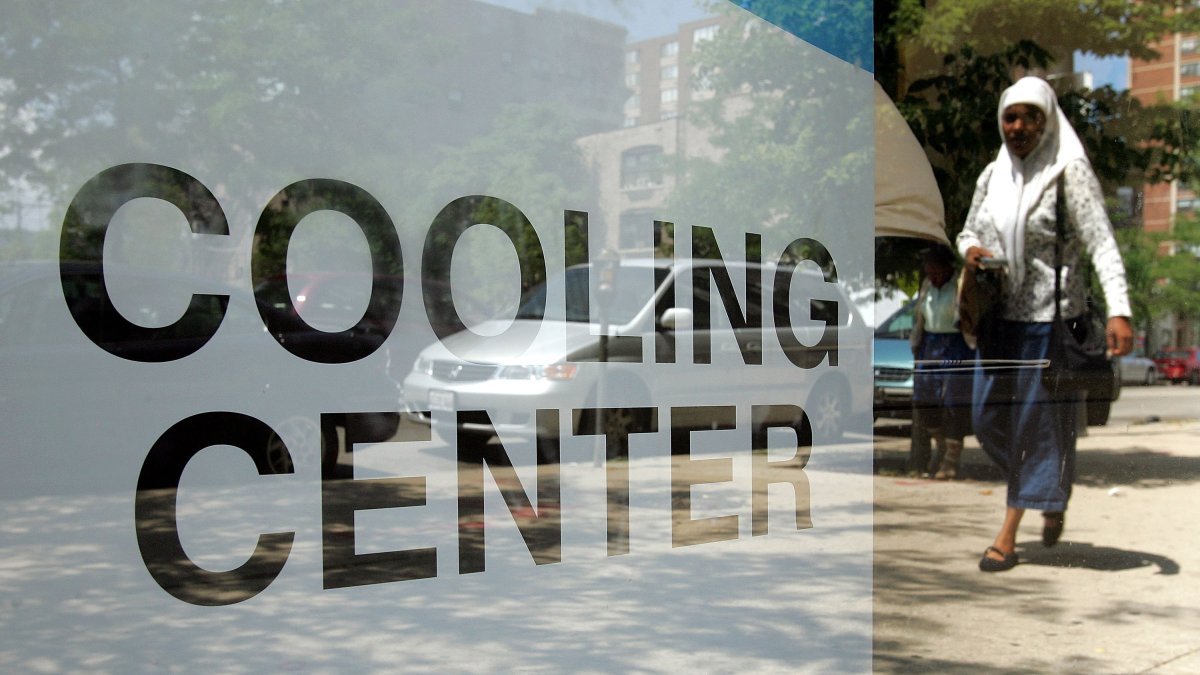
Prompted by an excessive heat warning, the city of Los Angeles will open and operate cooling centers through Wednesday evening, Mayor Karen Bass’ office announced.
The city has hundreds of free locations open for residents to find an escape from the heat, such as recreation and parks facilities and local library branches. For locations and hours of operation, visit laparks.org/reccenter or lapl.org/branches.
Cooling centers are accessible to people with disabilities. They also provide charging devices for phones and some medical equipment, as well as refrigerators for medication.
Starting Tuesday, five cooling centers will be available:
- Fred Roberts Recreation Center, 4700 Honduras St.;
- Mid Valley Senior Center, 8801 Kester Ave. in Panorama City;
- Sunland Senior Center, 8640 Fenwick St. in Sunland;
- Jim Gilliam Recreation Center, 4000 S. La Brea Ave; and
- Lincoln Heights Senior Center, 2323 Workman St.
The Mayor’s Office of Housing and Homelessness, in coordination with the Los Angeles Homeless Services Authority, began outreach with unhoused residents to provide them with hotel vouchers.
In Skid Row, three climate stations will be available for unhoused residents to grab cold beverages and sit in the shade, at the following:
- Towne Street, between Fifth and Sixth streets, across the street from the ReFresh Spot;
- San Pedro Street, mid-block between Sixth and Seventh streets; and
- Fifth Street and Maple Avenue
The ReFresh Spot, located at 544 Towne Ave., is also open and provides the Skid Row community access to drinking water, restrooms, showers and laundry facilities. The ReFresh Spot is open 24 hours a day, seven days a week, and is open to anyone in the community, free of charge, according to Bass’ office.
LA pools will also be available for residents. Hours of operations can be found here
The Department of Water and Power is prepared to work around the clock and meet customer demand. Crews are ready to respond to possible power outages, and additional staff are on standby. Power outages can be reported at ladwp.com/outages or by calling 1-800-DIAL-DWP (1-800-342-5397).
LADWP customers can sign up to receive outage alerts via text or email at ladwp.com/outagealert.
The National Weather Service issued excessive heat warnings from 11 a.m. Tuesday until 8 p.m. Wednesday in the Santa Clarita and San Fernando valleys, and other areas in Southern California.
Temperatures are expected to cool down starting Thursday.
-

 News9 months ago
News9 months ago6 Ways To Attract a Rich Girl of Your Dream
-

 Finance8 months ago
Finance8 months agoWhich credit card is best for small businesses?
-

 Finance7 months ago
Finance7 months agoBest Business Credit Cards With 0% APR – February 2024
-

 Finance8 months ago
Finance8 months agoHow To Apply For A Chase Business Credit Card
-

 Finance8 months ago
Finance8 months agoLimited Time: Sign up for Chase Freedom Unlimited for a Year of Unlimited Cash Back!
-

 Finance9 months ago
Finance9 months agoLowe’s Credit Card: New Discounts on Lowe’s Purchases
-

 Entertainment9 months ago
Entertainment9 months agoNetflix Schedule January 2024
-

 Tech9 months ago
Tech9 months agoApple Vision Pro: $3,499 headset finally has a release date

